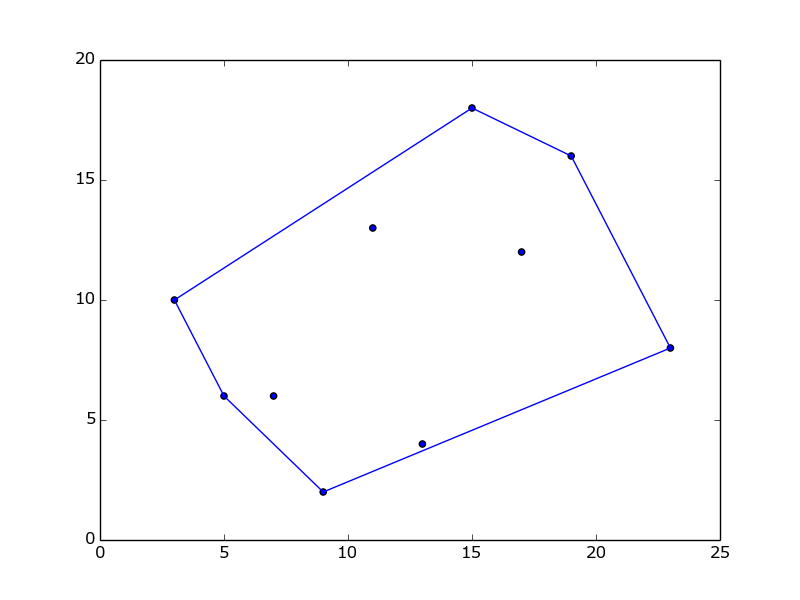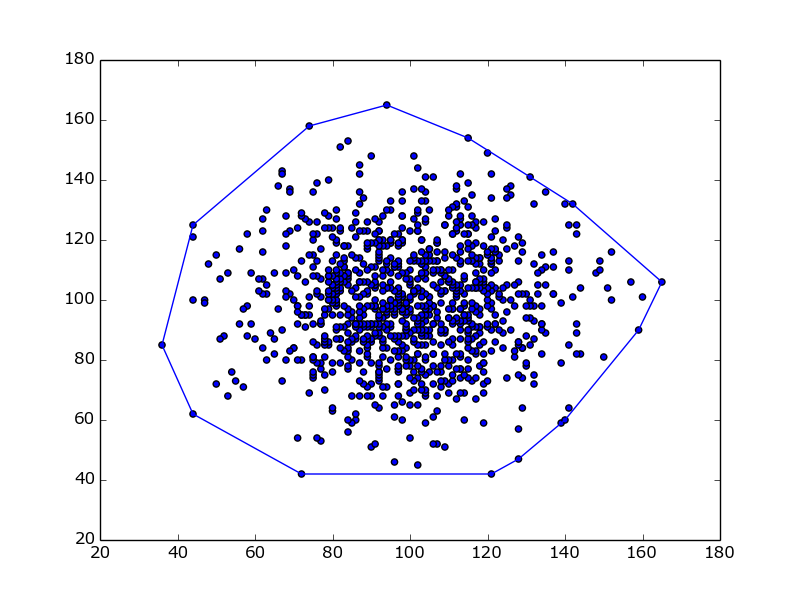Convex Hull
One Page
04_run
20161206
Run 1
Input:
points= [ (9,2),(5,6),(3,10),(11,13),(7,6),(15,18),(19,16),(13,4),(23,8),(17,12) ]Output:
Points on the hull [(9, 2), (23, 8), (19, 16), (15, 18), (3, 10), (5, 6)]
Perimeter distance: 53.1991493831Solution: the length of the wire we need to fence off the sheep is: 53.20.

Run 2
Check if the convex hull implementation is correct by taking as input a list of 1000 random points:

Conclusion: yes it's correct, all points fall within or on the convex hull.
Run 3
And finally, let's take as input a list of 1000 random points from a normal distribution:

Alternative implementation
Here is a different implementation of the core Graham scan, the same as implemented by Sedgewick in algs4.cs.princeton.edu/99hull/GrahamScan.java.html.
Because of the stack operations I find this implementation more difficult to understand, but its big advantage is that it doesn't need to copy the whole points list.
1 2 3 4 5 6 7 8 9 | |